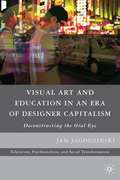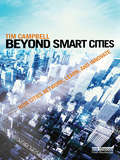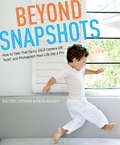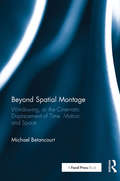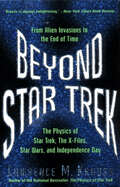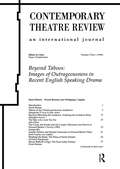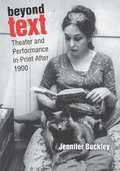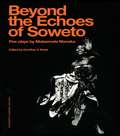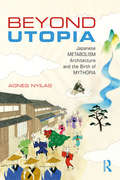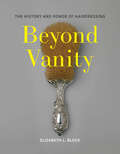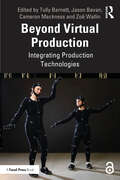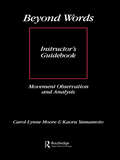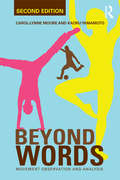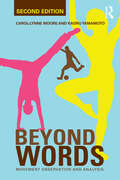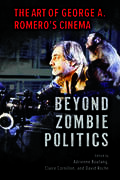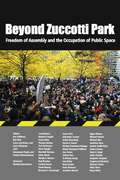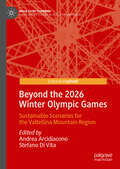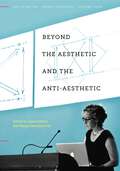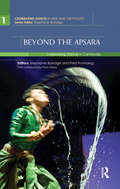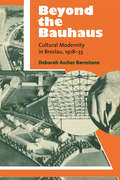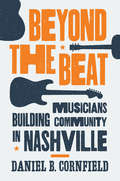- Table View
- List View
Beyond Sightseeing: The Art of Exploring Cities
by Alexander GarvinAs vivid as it is practical, Beyond Sightseeing distills the considerable insights Alexander Garvin has acquired through a lifetime of traveling the world over in his career as one of the nation&’s most notable urban planners. With historical context, personal stories, and photos from his own travels to locales as far flung as Moscow and Seville, Paris and Havana, Garvin generously invites the reader to view cities through his expert lens. Far from a travel guide, this book is a beguiling invitation to the joys of slow travel—transporting readers while equipping them to transcend tourist destinations to create their own unique experience of the places they visit. Garvin is the author of six other books on cities including, The American City: What Works, What Doesn&’t, winner of the American Institute of Architects book award in urbanism and What Makes a Great City, published by Island Press in 2016. Unlike his other professional books, which are devoted primarily to American cities, Beyond Sightseeing deals with tourist destinations around the world to which Garvin travelled. The principles it sets forth are applicable to places and cities anywhere in the world.
Beyond Slavery
by Jan JagodzinskiThis book offers a unique perspective of art and its education in designer capitalism. It will contribute to the debate as to possibilities art and design hold for the future. It also questions the broad technologization of art that is taking place.
Beyond Smart Cities: How Cities Network, Learn and Innovate
by Tim CampbellThe promise of competitiveness and economic growth in so-called smart cities is widely advertised in Europe and the US. The promise is focussed on global talent and knowledge economies and not on learning and innovation. But to really achieve smart cities – that is to create the conditions of continuous learning and innovation – this book argues that there is a need to understand what is below the surface and to examine the mechanisms which affect the way cities learn and then connect together. This book draws on quantitative and qualitative data with concrete case studies to show how networks already operating in cities are used to foster and strengthen connections in order to achieve breakthroughs in learning and innovation. Going beyond smart cities means understanding how cities construct, convert and manipulate relationships that grow in urban environments. Cities discussed in this book – Amman, Barcelona, Bilbao, Charlotte,Curitiba, Juarez, Portland, Seattle and Turin – illuminate a blind spot in the literature. Each of these cities has achieved important transformations, and learning has played a key role, one that has been largely ignored in academic circles and practice concerning competitiveness and innovation.
Beyond Snapshots: How to Take That Fancy DSLR Camera Off "Auto" and Photograph Your Life like a Pro
by Rachel Devine Peta MazeyReady to Capture Your Story with Beautiful Photos? Let professional photographers Rachel Devine and Peta Mazey show you how to use that fancy DSLR to photograph the story of your life, from falling in love and having a baby, to the everyday moments that are no less precious. You'll learn: * Common beginner mistakes and how to avoid them * How to take portraits of your children, friends, pets--even yourself * How to capture light to make your photos more dramatic * How to make colors pop, eyes sparkle, and skin tones more realistic * How to capture the uniqueness and wonder of your family, friends, and world After all, why trust your memories to regular snapshots when with just a little knowledge, you can create beautiful photographs? Be inspired to see the beauty around you, every day.
Beyond Spatial Montage: Windowing, or the Cinematic Displacement of Time, Motion, and Space
by Michael BetancourtBeyond Spatial Montage: Windowing, or the Cinematic Displacement of Time, Motion, and Space offers an extended discussion of the morphology and structure of compositing, graphic juxtapositions, and montage employed in motion pictures. Drawing from the history of avant-garde and commercial cinema, as well as studio-based research, here media artist and theorist Michael Betancourt critiques cinematic realism and spatial montage in motion pictures. This new taxonomic framework for conceptualizing linkages between media art and narrative cinema opens new areas of experimentation for today’s film editors, motion designers, and other media artists.
Beyond Star Trek: From Alien Invasions to the End of Time
by Lawrence M. KraussThe author of The Physics of Star Trek “expands his scope to address other sci-fi hits, ranging from the film 2001: A Space Odyssey to TV’s The X-Files” (Kirkus Reviews).In the bestselling The Physics of Star Trek, the renowned theoretical physicist Lawrence Krauss took readers on an entertaining and eye-opening tour of the Star Trek universe to see how it stacked up against the real universe. Now, responding to requests for more as well as to a number of recent exciting discoveries in physics and astronomy, Krauss takes a provocative look at how the laws of physics relate to notions from our popular culture—not only Star Trek, but other films, shows, and popular lore—from Independence Day to Star Wars to The X-Files.What’s the difference between a flying saucer and a flying pretzel?Why didn’t the aliens in Independence Day have to bother invading Earth to destroy it?What’s new with warp drives?What’s the most likely scenario for doomsday?Are ESP and telekinesis impossible?What do clairvoyance and time travel have in common?How might quantum mechanics ultimately affect the fate of life in the universe?“Combining hard science and popular culture, this delightful follow-up to Krauss’s The Physics of Star Trek continues to explore the possibilities, principles and improbabilities of science fiction . . . Relaxed and full of lively conversation, Krauss is the physics teacher we all wish we had had in high school.” —Publishers Weekly
Beyond Sustainable: Architecture's Evolving Environments of Habitation
by Ryan LudwigBeyond Sustainable discusses the relationship between human-beings and the constructed environments of habitation we create living in the Anthropocene, an increasingly volatile and unpredictable landscape of certain change. This volume accepts that human-beings have reached a moment beyond climatological and ecological crisis. It asks not how we resolve the crisis but, rather, how we can cope with, or adapt to, the irreversible changes in the earth-system by rethinking how we choose to inhabit the world-ecology. Through an examination of numerous historical and contemporary projects of architecture and art, as well as observations in philosophy, ecology, evolutionary biology, genetics, neurobiology and psychology, this book reimagines architecture capable of influencing and impacting who we are, how we live, what we feel and even how we evolve. Beyond Sustainable provides students and academics with a single comprehensive overview of this architectural reconceptualization, which is grounded in an ecologically inclusive and co-productive understanding of architecture.
Beyond Taboos
by Nicole Boireau Wolfgang J. LippkeThis collection of essays covers the related areas of aesthetics and politics, both in the field of theatre and in everyday life. Each contributor seeks to illustrate how drama subverts the foundations of the accepted models of perception and how it mediates on its own conventions.
Beyond Text: Theater and Performance in Print After 1900
by Jennifer BuckleyTaking up the work of prominent theater and performance artists, Beyond Text reveals the audacity and beauty of avant-garde performance in print. With extended analyses of the works of Edward Gordon Craig, German expressionist Lothar Schreyer, the Living Theatre, Carolee Schneemann, and Guillermo Gómez-Peña, the book shows how live performance and print aesthetically revived one another during a period in which both were supposed to be in a state of terminal cultural decline. While the European and American avant-gardes did indeed dismiss the dramatic author, they also adopted print as a theatrical medium, altering the status, form, and function of text and image in ways that continue to impact both the performing arts and the book arts. Beyond Text participates in the ongoing critical effort to unsettle conventional historical and theoretical accounts of text-performance relations, which have too often been figured in binary, chronological (“from page to stage”), or hierarchical terms. Across five case studies spanning twelve decades, Beyond Text demonstrates that print—as noun and verb—has been integral to the practices of modern and contemporary theater and performance artists.
Beyond The Bead: Making Jewelry With Unexpected Finds
by Margot PotterTake Your Jewelry Beyond the BeadIf you're ready to put a new spin on your regular old beaded jewelry, this is just the book for you. Inside Beyond the Bead, you'll find more than 25 mixed-media techniques for taking your jewelry to totally unexpected places. This is truly no-holds-barred jewelry making - try your hand at molding polymer clay, hammering metal, etching glass, cyber crafting and so much more. In this book, author Margot Potter encourages you to let out all those kooky ideas rolling around inside your noggin by trying some new techniques. Then use what you've learned to make uniquely fascinating jewelry that reflects a uniquely fascinating you.
Beyond The Echoesoweto
by Geoffrey V. Davis Matsemela ManakaFirst Published in 2004. Routledge is an imprint of Taylor & Francis, an informa company.
Beyond Utopia: Japanese Metabolism Architecture and the Birth of Mythopia
by Agnes NyilasMegastructure proposals by the Japanese Metabolism group are commonly identified with the concept of utopia. Beyond this partial understanding, Agnes Nyilas suggests that rather than being merely utopian, the Megastructure of Metabolism represents a uniquely amalgam genre: the myth camouflaged as utopia. Although its Megastructure seemingly describes a desirable future condition as utopia does, it also comprises certain cultural images rooted in the collective (un)conscious of Japanese people, in accordance with the general interpretation of myth. The primary narrative of Beyond Utopia thus follows the gradual unfolding of the myth-like characteristics of its Megastructure. Myth is dealt here as an interdisciplinary subject in line with contemporary myth theories. After expounding the mechanism underlying the growing demand for a new myth in architecture (the origin of the myth), Part I discovers the formal characteristics of the Megastructure of Metabolism to give a hint of the real intention behind it. Based on this, Part II is a reexamination of their design methods, which aims to clarify the function of the myth and to suggest the meaning behind it. Finally, Part III deals with the subject matter of the myth by disclosing the meaning unfolding in the story, and suggests a new reading of Metabolism urban theory: as an attempt to reconsider the traditional Japanese space concept.
Beyond Vanity: The History and Power of Hairdressing
by Elizabeth L. BlockFrom the award-winning author of Dressing Up, a riveting and diverse history of women’s hair that reestablishes the cultural power of hairdressing in nineteenth-century America.In the nineteenth century, the complex cultural meaning of hair was not only significant, but it could also impact one’s place in society. After the Civil War, hairdressing was also a growing profession and the hair industry a mainstay of local, national, and international commerce. In Beyond Vanity, Elizabeth Block expands the nascent field of hair studies by restoring women’s hair as a cultural site of meaning in the early United States. With a special focus on the places and spaces in which the hair industry operated, Block argues that the importance of hair has been overlooked due to its ephemerality as well as its misguided association with frivolity and triviality. As Block clarifies, hairdressing was anything but frivolous.Using methods of visual and material culture studies informed by concepts of cultural geography, Block identifies multiple substantive categories of place and space within which hair acted. These include the preparatory places of the bedroom, hair salon, and enslaved peoples’ quarters, as well as the presentation places of parties, fairs, stages, and workplaces. Here are also the untold stories of business owners, many of whom were women of color, and the creators of trendsetting styles like the pompadour and Gibson Girl bouffant. Block’s ground-breaking study examines how race and racism affected who participated in the presentation and business of hair, and according to which standards. The result of looking closely at the places and spaces of hair is a reconfiguration that allows a new understanding of the cultural power of hair in the period.
Beyond Virtual Production: Integrating Production Technologies
by Barnett, Edited by Tully Jason Bevan Cameron Mackness Zoë WallinBeyond Virtual Production brings together a range of creative practice research projects that have been undertaken in The Void, an early-adopter university-based virtual production studio at Flinders University in South Australia.From a cross-disciplinary short virtual production film, to a VR simulation of the last 100 seconds of life of earth, to the live performance of the virtual band Big Sands, to augmented and extended reality, to archaeological projects, this collection captures the potential applications of virtual production technology and provides a framework for cross-disciplinary work and industry collaborations both in a university context and beyond. It offers insight into the development of virtual production courses and encompasses research into theories of performance, liveness, methods for co-creation, gender in virtual production careers, and object digitization and its representation while highlighting significant pathways of industry partnerships alongside experimental art practices.Creative technology and interdisciplinary practitioners, researchers, students, and teachers will find inspiration and practical guidance in these chapters.
Beyond Words: Instructor's Manual
by Carol-Lynne Moore Kaoru YamamotoThis guidebook is designed to facilitate the use of "Beyond Words" materials. By drawing on their own teaching experiences, the authors offer suggestions for attaining teaching/learning goals, and for overcoming difficulties in using the movement observation and analysis programme. Many of the creative adaptations described come from individuals at different institutions who tested "Beyond Words" while it was being developed. It is not intended, therefore, as a prescriptive document, but rather as a guide which provides many alternative ways of utilizing "Beyond Words", and which leaves the rest to the instructor.
Beyond Words: Movement Observation and Analysis
by Carol-Lynne Moore Kaoru YamamotoBeyond Words presents a range of illuminating approaches to examining every day social interactions, to help the reader understand human movement in new ways. Carol-Lynne Moore and Kaoru Yamamoto build on the principles that they expertly explored in the first edition of the book, maintaining a focus on the processes of movement as opposed to discussions of static body language. The authors combine textual discussion with a new set of website-hosted video instructions to ensure that readers develop an in-depth understanding of nonverbal communication, as well as the work of its most influential analyst, Rudolf Laban. This fully-revised, extensively illustrated second edition includes a new introduction by the authors. It presents a fascinating insight into this vital field of study, and will be an invaluable resource for scholars and practitioners in many activities, from performing and martial arts, athletics, to therapeutic and spiritual practices, conflict resolution, business interactions, and intercultural relations.
Beyond Words: Movement Observation and Analysis
by Carol-Lynne Moore Kaoru YamamotoBeyond Words presents a range of illuminating approaches to examining every day social interactions, to help the reader understand human movement in new ways.Carol-Lynne Moore and Kaoru Yamamoto build on the principles that they expertly explored in the first edition of the book, maintaining a focus on the processes of movement as opposed to discussions of static body language. The authors combine textual discussion with a new set of website-hosted video instructions to ensure that readers develop an in-depth understanding of nonverbal communication, as well as the work of its most influential analyst, Rudolf Laban.This fully-revised, extensively illustrated second edition includes a new introduction by the authors. It presents a fascinating insight into this vital field of study, and will be an invaluable resource for scholars and practitioners in many activities, from performing and martial arts, athletics, to therapeutic and spiritual practices, conflict resolution, business interactions, and intercultural relations.
Beyond Zombie Politics: The Art of George A. Romero’s Cinema (Horror and Monstrosity Studies Series)
by David Roche Adrienne Boutang Claire CornillonContributions by Julien Achemchame, Julie Assouly, David Church, Suzanne Desrocher-Romero, Hélène Frazik, Pierre Jailloux, Nicolas Labarre, Sophie Lécole-Solnychkine, Janice Loreck, Stella Louis, Kingsley Marshall, Krista Mitchell, Karen D. Thornton, and Arnaud Widendaële Best known for Night of the Living Dead (1968) and its sequels, George A. Romero (1940–2017) was a writer, editor, director, producer, and influential pioneer of the horror film genre. Beyond Zombie Politics: The Art of George A. Romero’s Cinema gathers a group of contributors to explore Romero’s work beyond the Living Dead films with two parallel but complementary tendencies within twenty-first-century film studies: the renewed interest in horror aesthetics and the emphasis on filmmaking as a collaborative practice. Opening with an original interview with Suzanne Desrocher-Romero, who shares her views on the late director’s craft and influence, the anthology is divided into three sections that deal with genre, musical motifs, and the (re)creative process. Each chapter adopts fresh methodologies to focus on an area that has received little academic study. Contributors investigate the films’ relation to subgenres like the counterculture movie or the witchcraft film; their debt to slapstick comedy or the recurrence of specific visual motifs like hands; the editing and the handling of space; the use of makeup and music; the films’ relation to comics; and their adaptation into other media. Authored by established and up-and-coming experts of horror and the Fantastic, the chapters in Beyond Zombie Politics aim to offer fresh insights into an important body of work, to contribute to current studies of the evolution of horror aesthetics, and to map the borders between exploitation, independent, and mainstream film.
Beyond Zuccotti Park: Freedom of Assembly and the Occupation of Public Space
by Shiffman Et AlIn the wake of the Occupy Wall Street movement, leading planers and social scientists examine public space today and freedom of assembly. The Occupy Wall Street movement has challenged the physical manifestation of the First Amendment rights to freedom of assembly. Where and how can people congregate today? Forty social scientists, planners, architects, and civil liberties experts explore the definition, use, role, and importance of public space for the exercise of our democratic rights to free expression. The book also discusses whose voice is heard and what factors limit the participation of minorities in Occupy activities. This foundational work puts issues of democracy and civic engagement back into the center of dialogue about the built environment.Beyond Zuccotti Park is a collaborative effort of Pratt Graduate Center for Planning and the Environment, City College of New York School of Architecture, New Village Press and its parent organization, Architects/Designers/Planners for Social Responsibility. The book is part of an open civic inquiry on the part of these organizations. The project was seeded by a series of free public forums, Freedom of Assembly: Public Space Today, held at the Center for Architecture in response to the forced clearance of Occupy activities from Zuccotti Park and public plazas throughout the country. The first two recorded programs took place on December 17, 2011 and February 4, 2012.
Beyond the 2026 Winter Olympic Games: Sustainable Scenarios for the Valtellina Mountain Region (Mega Event Planning)
by Stefano Di Vita Andrea ArcidiaconoThis volume offers a novel study of the Milan-Cortina's Winter Olympics 2026, with a focus on the mountainous region of Valtellina. It brings an up-to-date analysis of the complex interactions between mega-events and remote areas, both in terms of potentials for regeneration and risks for further segregation. Remote areas are traditionally characterized by socio-economic and spatial disparities. On the one hand, they benefit from attractive features, such as environmental and landscape resources, food and wine production, and energy production. On the other, they are by definition fragile environments, disrupted by the contradictions of international tourism, climate change, limited infrastructures and services, rural abandonment, and demographic decline.This book offers credible solutions for the sustainable development of mountainous regions as a legacy of Winter Olympics. It is an essential resource for scholars, professionals, and policy-makers in the fieldsof urban planning and design, architecture design, geography, sociology, and economics.
Beyond the Aesthetic and the Anti-Aesthetic (The Stone Art Theory Institutes)
by James Elkins Harper MontgomeryEach of the five volumes in the Stone Art Theory Institutes series, and the seminars on which they are based, brings together a range of scholars who are not always directly familiar with one another’s work. The outcome of each of these convergences is an extensive and “unpredictable conversation” on knotty and provocative issues about art. This fourth volume in the series, Beyond the Aesthetic and the Anti-Aesthetic, focuses on questions revolving around the concepts of the aesthetic, the anti-aesthetic, and the political. The book is about the fact that now, almost thirty years after Hal Foster defined the anti-aesthetic, there is still no viable alternative to the dichotomy between aesthetics and anti- or nonaesthetic art. The impasse is made more difficult by the proliferation of identity politics, and it is made less negotiable by the hegemony of anti-aesthetics in academic discourse on art. The central question of this book is whether artists and academicians are free of this choice in practice, in pedagogy, and in theory.The contributors are Stéphanie Benzaquen, J. M. Bernstein, Karen Busk-Jepsen, Luis Camnitzer, Diarmuid Costello, Joana Cunha Leal, Angela Dimitrakaki, Alexander Dumbadze, T. Brandon Evans, Geng Youzhuang, Boris Groys, Beáta Hock, Gordon Hughes, Michael Kelly, Grant Kester, Meredith Kooi, Cary Levine, Sunil Manghani, William Mazzarella, Justin McKeown, Andrew McNamara, Eve Meltzer, Nadja Millner-Larsen, Maria Filomena Molder, Carrie Noland, Gary Peters, Aaron Richmond, Lauren Ross, Toni Ross, Eva Schürmann, Gregory Sholette, Noah Simblist, Jon Simons, Robert Storr, Martin Sundberg, Timotheus Vermeulen, and Rebecca Zorach.
Beyond the Aesthetic and the Anti-Aesthetic: Beyond The Aesthetic And Anti-aesthetic (The Stone Art Theory Institutes #4)
by James Elkins Harper MontgomeryEach of the five volumes in the Stone Art Theory Institutes series, and the seminars on which they are based, brings together a range of scholars who are not always directly familiar with one another’s work. The outcome of each of these convergences is an extensive and “unpredictable conversation” on knotty and provocative issues about art. This fourth volume in the series, Beyond the Aesthetic and the Anti-Aesthetic, focuses on questions revolving around the concepts of the aesthetic, the anti-aesthetic, and the political. The book is about the fact that now, almost thirty years after Hal Foster defined the anti-aesthetic, there is still no viable alternative to the dichotomy between aesthetics and anti- or nonaesthetic art. The impasse is made more difficult by the proliferation of identity politics, and it is made less negotiable by the hegemony of anti-aesthetics in academic discourse on art. The central question of this book is whether artists and academicians are free of this choice in practice, in pedagogy, and in theory.The contributors are Stéphanie Benzaquen, J. M. Bernstein, Karen Busk-Jepsen, Luis Camnitzer, Diarmuid Costello, Joana Cunha Leal, Angela Dimitrakaki, Alexander Dumbadze, T. Brandon Evans, Geng Youzhuang, Boris Groys, Beáta Hock, Gordon Hughes, Michael Kelly, Grant Kester, Meredith Kooi, Cary Levine, Sunil Manghani, William Mazzarella, Justin McKeown, Andrew McNamara, Eve Meltzer, Nadja Millner-Larsen, Maria Filomena Molder, Carrie Noland, Gary Peters, Aaron Richmond, Lauren Ross, Toni Ross, Eva Schürmann, Gregory Sholette, Noah Simblist, Jon Simons, Robert Storr, Martin Sundberg, Timotheus Vermeulen, and Rebecca Zorach.
Beyond the Apsara: Celebrating Dance in Cambodia (Celebrating Dance In Asia And The Pacific Ser.)
by Stephanie BurridgeThis book celebrates and documents the resurgence of dance in Cambodia after the fall of the Khmer Rouge and the infamous Pol Pot regime. It honours the remarkable commitment of the few remaining masters of the art of dance who are reviving and preserving the famous classical dances, as well as the courage and resolution of young artists who are imaginatively pursuing their passion to forge new paths in contemporary dance. n 2003, Cambodian classical dance was awarded world heritage status by UNESCO – this confirmed the importance, and perhaps the burden, of the task of preservation. This volume includes contributions from the royal family, eminent writers and commentators and the dancers themselves. Monuments and reminders of the Killing Fields abound in the city of Phnom Penh. Nearly 2 million Cambodians, including many artists, perished during the killings or died of starvation and disease during the Khmer Rouge years. Today, the dancers, both young and old, move towards the future while respecting and honouring the past. This volume documents their journey.
Beyond the Bauhaus: Cultural Modernity in Breslau, 1918-33
by Deborah Ascher BarnstoneAlthough the Breslau arts scene was one of the most vibrant in all of Weimar-era Germany, it has largely disappeared from memory. Studies of the influence of Weimar culture on modernism have focused almost exclusively on Berlin and the Dessau Bauhaus, yet the advances that occurred in Breslau affected nearly every intellectual field, forming the basis for aesthetic modernism internationally and having an enduring impact on visual art and architecture. Breslau boasted a thriving modern arts scene and one of the premier German arts academies of the day until the Nazis began their assault on so-called degenerate art. This book charts the cultural production of Breslau-based artists, architects, art collectors, urban designers, and arts educators who operated in the margins of Weimar-era cultural debates. Rather than accepting the radical position of the German avant-garde or the reactionary position of German conservatives, many Breslauers sought a middle ground. This richly illustrated volume is the first book in English to address this history, constituting an invaluable addition to the literature on the Weimar period. Its readership includes scholars of German history, art, architecture, urban design, planning, collecting, and exhibition history; of the avant-garde, and of the development of arts academies and arts pedagogy.
Beyond the Beat
by Daniel B. CornfieldAt a time when the bulwarks of the music industry are collapsing, what does it mean to be a successful musician and artist? How might contemporary musicians sustain their artistic communities? Based on interviews with over seventy-five popular-music professionals in Nashville, Beyond the Beat looks at artist activists--those visionaries who create inclusive artist communities in today's individualistic and entrepreneurial art world. Using Nashville as a model, Daniel Cornfield develops a theory of artist activism--the ways that artist peers strengthen and build diverse artist communities.Cornfield discusses how genre-diversifying artist activists have arisen throughout the late twentieth-century musician migration to Nashville, a city that boasts the highest concentration of music jobs in the United States. Music City is now home to diverse recording artists--including Jack White, El Movimiento, the Black Keys, and Paramore. Cornfield identifies three types of artist activists: the artist-producer who produces and distributes his or her own and others' work while mentoring early-career artists, the social entrepreneur who maintains social spaces for artist networking, and arts trade union reformers who are revamping collective bargaining and union functions. Throughout, Cornfield examines enterprising musicians both known and less recognized. He links individual and collective actions taken by artist activists to their orientations toward success, audience, and risk and to their original inspirations for embarking on music careers.Beyond the Beat offers a new model of artistic success based on innovating creative institutions to benefit the society at large.

